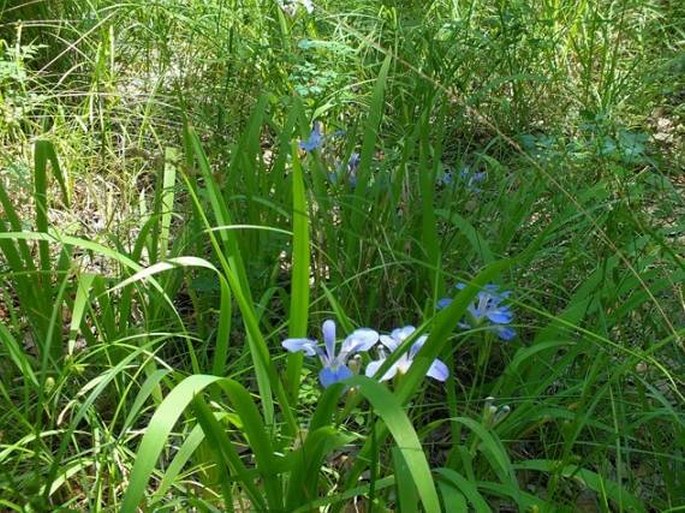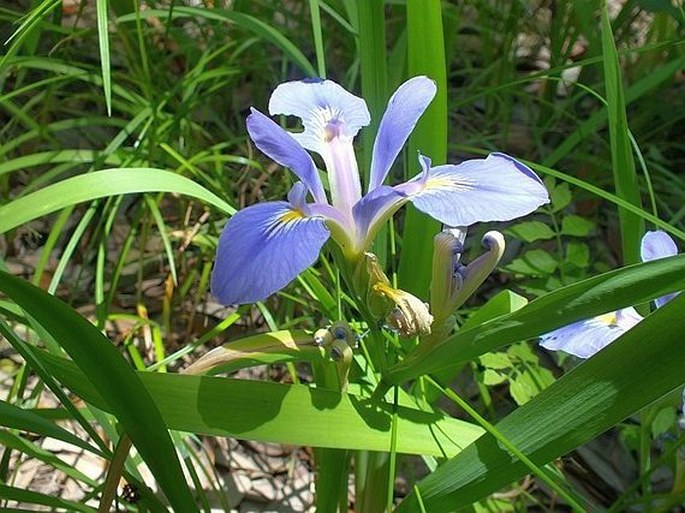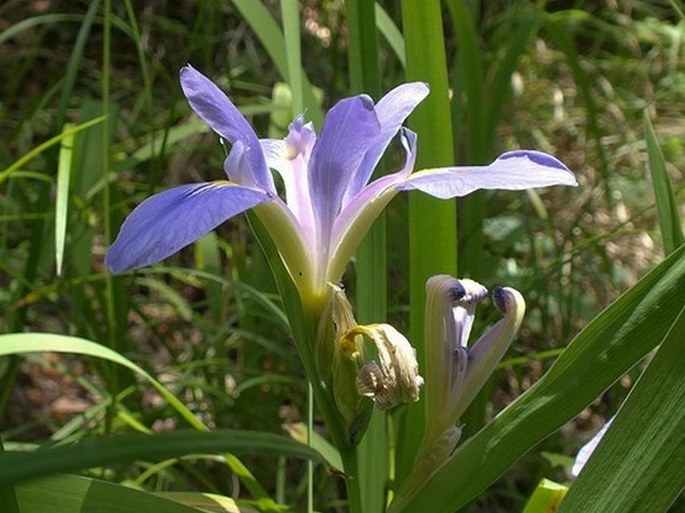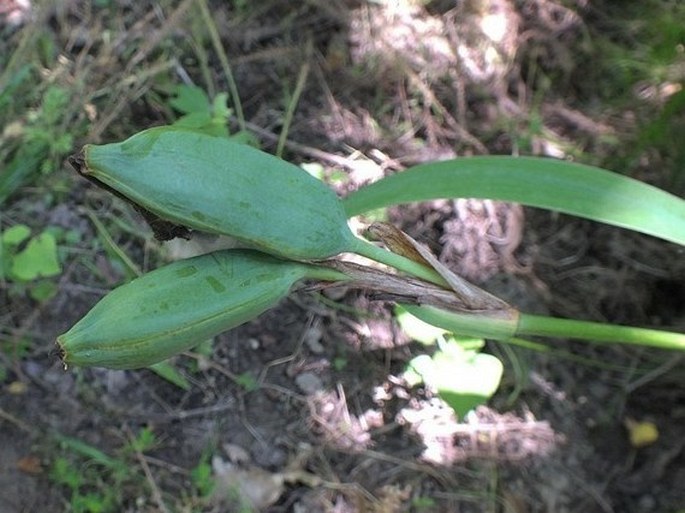Syn.: Iris caroliniana S. Watson, Iris convoluta Raf., Iris georgiana Britton, Iris shrevei Small, Iris virginica var. shrevei (Small) E. S. Anderson, Limniris virginica (L.) Rodion., Xiphion virginicum (L.) Alef.
Family: Iridaceae Juss.

Distribution: North American species occurring in the eastern part of the continent from Ontario and Quebec to Texas and Florida. Absent in extreme north eastern coastal areas.
Ecology: Wetlands, margins of lakes and streams, occasionally in swamps and marshes. Blooms in May and June.

Description: Perennial herb up to 100 cm tall from stout, many-branched underground rhizomes, fleshy roots, growing in clumps. Stems weak, often falling over after flowering, usually single. Leaves erect but flexible, grey green to bright green, several prominent ribs in mature leaves, linear, sword-shaped, 60–80 × 2.5–3 cm, apex acute. Inflorescence 2–3-flowered, spathes compact, often with brown striations, ridged, unequal, outer 3–8 cm, inner 8–14 cm, firm. Perianth lavender to violet, rarely white, floral tube constricted above ovary, 1–2 cm; outer perianth segments spreading and arched, obovate to oval, 4–8.4 × 1.6–4 cm, pale blue to purple with darker blue or purple lines, claw green in median, bordered by yellow ground with blue or purple lines, yellow extending onto base of limb, inner perianth segments oblong-lanceolate to oblong-spatulate, 3–7 × 1–3 cm, claw greenish yellow with blue or purplish lines, apex often emarginate. Fruit is a capsule, ovoid, ellipsoid or long cylindric; seeds in 2 rows per locule, pale brown, 5–8 mm.
Threat and protection: The Virginia Iris is listed as endangered in Pennsylvania.



These images were taken in USA, Louisiana, Fontainebleau State Park (May 2014).


